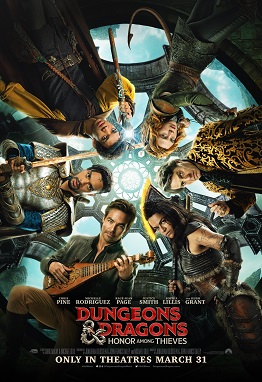 The Fellowship of the Ring
The Fellowship of the Ring by
J.R.R. TolkienMy rating:
4 of 5 starsThe first entry of author J.R.R. Tolkien's Lord of the Ring series, the start of the sequel series to The Hobbit, opens with a prologue detailing the various aspects of the halfling race known as hobbits, their government, their love of smoking pipe-weed, and some synopses of key information from the prequel book such as Bilbo's acquisition of the One Ring of Mordor. The main chapters begin threescore after The Hobbit, with Bilbo Baggins about to celebrate his hundred-and-eleventh birthday, the same day his second/third nephew (or first cousin once/twice removed) Frodo Baggins celebrates his thirty-third.
Bilbo uses the One Ring to "disappear" from Hobbiton forever and never be seen again, with his cousins, the Sackville-Bagginses, annoyed they won't inherit his property, Bag End, and that it'll go to his nephew. Gandalf tells Frodo of the truth of the Ring, noting the corruption and transformation of Sméagol into Gollum, and Sam Gamgee joins Frodo on his quest to destroy the One Ring in the fires of Mount Doom in Mordor. Meanwhile, the Ringwraiths, formerly the nine mortal men who received rings from the Dark Lord Sauron, are on the move, seeking the One Ring.
Fellow hobbits Pippin Took and Merry Brandybuck join Frodo and Sam, and the four find themselves in the home of the enigmatic Tom Bombadil, to whom Frodo contemplates giving the One Ring since it doesn't affect Bombadil at all. Bombadil afterward rescues the hobbits from a barrow-wight, and they continue to the village of Bree where they stop at the Prancing Pony inn, meeting the equally-enigmatic Strider, who sees Frodo for who he truly is as the Ring-bearer, with the Ringwraiths catching up to them. One of the nine stabs Frodo, with a flood sweeping them away afterward.
Frodo is taken to the home of Elrond where he is healed and reunited with his friends, chief among them Gandalf, who tells of his dealings with the rogue wizard Saruman who allies with Sauron, and the newly-formed fellowship sets off for Mordor. After facing troubles attempting to cross the Misty Mountains, the company agrees to traverse the Mines of Moria, where the fate of Balin the dwarf is discovered, along with a journal detailing the dwarven abandonment of the subterranean caverns. At this time, the forces of Mordor invade, and the fellowship separates from Gandalf.
The party enters elf-inhabited woodlands and meets Lady Galadriel, bearer of one of the elven rings of Mordor, with Frodo offering her the One Ring, although she refuses. They leave afterward, and the fellowship ultimately dissolves when Mordor’s forces attack. Boromir tries to seize the One Ring for himself, with Frodo and Sam setting off alone to destroy it. Overall, the first entry of Tolkien's esteemed trilogy is definitely an enjoyable, straightforward fantasy novel, although it does feature negative tropes such as orcs being inherently bad, with no "good" ones present. Even so, it's a must-read for anyone with a liking for the fantasy genre.
View all my reviews


















